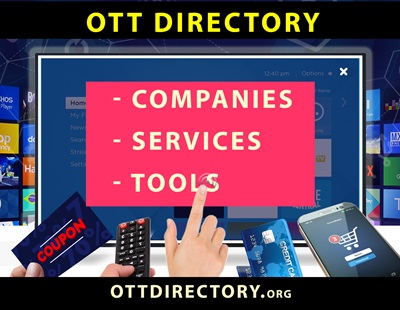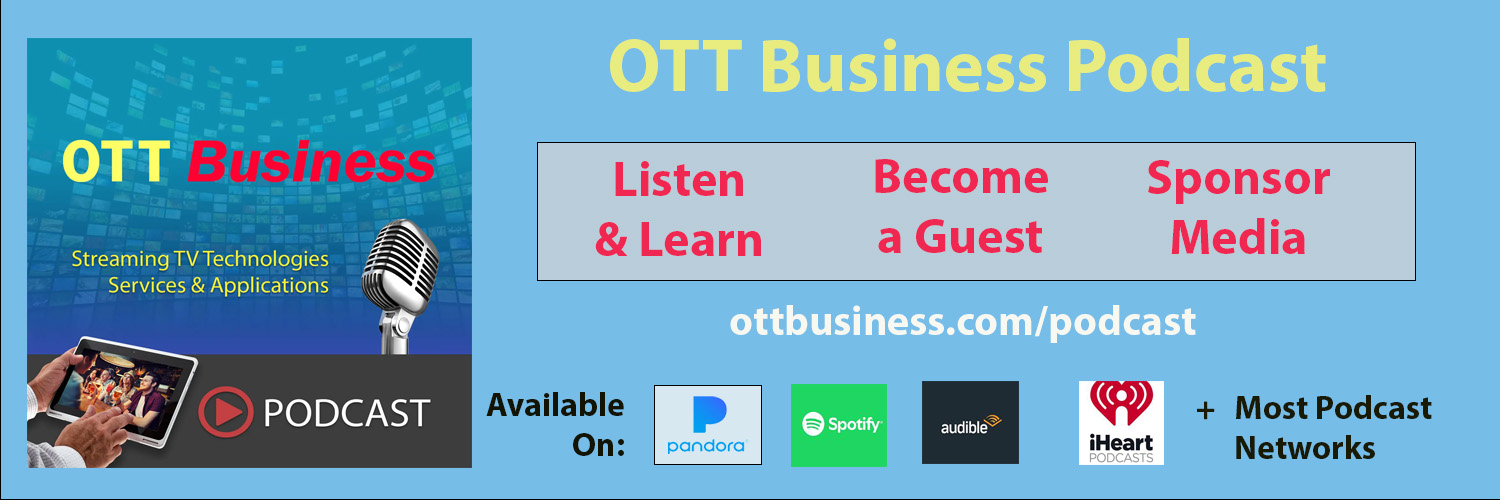IP Video Monitoring displays provide real-time surveillance and analysis of video streams to ensure consistent delivery quality, detect issues, and maintain the reliability of OTT and Streaming TV systems. IP Video Monitoring platforms and services address the critical issue of ensuring consistent and high-quality video delivery for TV and OTT systems by detecting and resolving streaming issues in real-time. These tools solve key problems such as stream interruptions, latency, signal degradation, and unauthorized access, which can negatively impact viewer experience and service reliability. Key features include real-time monitoring of video streams, automated alerts for potential disruptions, comprehensive analytics on video quality and performance, and secure access controls to protect content integrity. Additionally, these platforms often provide advanced troubleshooting tools, historical data analysis, and integration with existing video delivery systems to enhance overall operational efficiency. By learning more about IP Video Monitoring, readers can safeguard their streaming services, ensuring optimal performance and customer satisfaction.
IP Video Monitoring Platforms and Services

IP Video Monitoring Platforms and Services List
Actus Digital – Actus Digital provides advanced compliance and monitoring solutions for IP video, focusing on content verification and analysis.
Agama Technologies – Agama Technologies provides monitoring, analytics, and visualization solutions that help operators deliver superior video service quality.
Bridge Technologies – Bridge Technologies specializes in advanced IP video monitoring solutions that enable broadcasters to optimize video delivery and detect issues.
Broadcasting Center Europe (BCE) – BCE provides IP video monitoring services tailored to broadcasters, ensuring high-quality video delivery and reliability.
Cinegy – Cinegy is a world-leading software development company specializing in innovative video, broadcast, media asset management, and OEM solutions for international broadcasters and equipment vendors.
Imagine Communications – Imagine Communications delivers IP video monitoring solutions that ensure the reliable transmission and high-quality performance of video streams.
Interra Systems – Interra Systems delivers IP video monitoring and quality control solutions designed to ensure video quality and compliance.
Mariner xVu – Mariner xVu offers video monitoring solutions that focus on improving the quality of experience for IP video and OTT services.
Mediaproxy – Provides software solutions for broadcast and IP-based media, including real-time video clipping and compliance logging.
Qligent – Qligent offers comprehensive compliance monitoring solutions that continuously track, record, and analyze media for regulatory adherence and quality assurance.
Rohde & Schwarz – Rohde & Schwarz provides advanced test and measurement equipment and production management solutions that ensure the quality, efficiency, and compliance of OTT and streaming TV systems and services.
Sentry (Tektronix) – Sentry, by Tektronix, provides real-time video quality monitoring and diagnostics, helping broadcasters maintain high standards of video delivery.
Snell Advanced Media (SAM) – SAM offers playout management and IP video monitoring tools that help broadcasters manage and optimize video quality across various platforms.
TAG Video Systems – TAG Video Systems offers 100% software-based solutions for IP monitoring, probing, and visualization, delivering real-time insights for OTT and broadcast video.
Tektronix – Tektronix offers video monitoring solutions that provide real-time analysis and diagnostics to ensure high-quality video delivery.
Telestream – Video transcoding, streaming, and clipping solutions for broadcasting and online media industries.
TRILOGY Communications Ltd (V-Nova) – V-Nova, part of TRILOGY Communications Ltd, provides IP video monitoring services that focus on improving video quality and efficiency through innovative technologies.
TSL – TSL provides advanced audio monitoring, broadcast control systems, and power management solutions to the OTT and streaming TV industry.
VideoFlow – VideoFlow provides real-time monitoring and error correction solutions for IP video, ensuring smooth and uninterrupted video streaming.
Volicon (Verizon Media) – Volicon, part of Verizon Media, offers monitoring solutions for broadcast and IP video streams, ensuring compliance and video quality.
Witbe – Witbe offers monitoring solutions for video services, providing end-to-end visibility into the quality of experience for OTT and broadcast content.
IP Video Monitoring Platforms and Services Key Features and Capabilities
24/7 Support and Maintenance
Continuous, round-the-clock support is vital for addressing issues immediately and ensuring the uninterrupted operation of your IP Video Monitoring system. This feature is crucial because it guarantees that any problems or concerns that arise, whether during peak hours or off-hours, can be resolved swiftly, minimizing downtime and maintaining service reliability.
Automated Alerts and Notifications
This feature automatically sends alerts and notifications when issues such as signal loss, buffering, or quality degradation are detected. Automated alerts are essential because they enable swift issue resolution by immediately informing operators of potential problems, allowing for timely intervention before they escalate.
Customizable Dashboards
Customizable dashboards allow users to tailor the display to show the most critical metrics and statuses, focusing on the data that matters most. This feature is important because it enhances efficiency by enabling operators to monitor key performance indicators at a glance, ensuring they can respond quickly to any issues.
Historical Data and Reporting
The ability to store and analyze historical data allows for the identification of trends, performance optimization over time, and the generation of reports for stakeholders. This feature is important as it provides insights that can lead to better decision-making, long-term strategy development, and continuous improvement in video delivery quality.
Integration Capabilities
Integration capabilities ensure that the IP Video Monitoring service is compatible with existing OTT and streaming TV infrastructure, allowing for seamless integration with other tools and platforms like CDNs, encoders, and transcoders. This feature is crucial because it ensures that the monitoring service can work harmoniously with your existing technology stack, providing a comprehensive and unified monitoring solution.
Multi-Layered Monitoring
Multi-layered monitoring involves overseeing various points in the delivery chain, including the source, network, and end-user, to identify and resolve issues at any stage. This feature is vital because it provides a comprehensive view of the entire delivery process, ensuring that issues can be pinpointed and addressed no matter where they occur, leading to a more reliable streaming experience.
Multi-Platform Support
Multi-platform support allows the monitoring of video streams across various platforms, such as web, mobile, and smart TVs, ensuring consistent quality across all user devices. This feature is essential because it ensures that all viewers, regardless of the device they use, experience high-quality streaming, which is critical for user satisfaction and retention.
Performance Analytics
Performance analytics provide detailed insights into stream performance, including metrics like bitrate, latency, packet loss, and error rates. This feature is important because it enables operators to optimize video delivery, ensuring that viewers receive the highest possible quality, which is critical for maintaining a competitive edge in the market.
Real-Time Monitoring
Real-time monitoring allows operators to oversee video streams as they happen, detecting and responding to issues immediately to ensure uninterrupted service quality. This feature is crucial because any delay in detecting problems can lead to viewer dissatisfaction, making real-time capabilities vital for maintaining a seamless streaming experience.
Redundancy and Failover
Redundancy and failover features ensure that monitoring continues even during system failures, maintaining consistent oversight of video streams. This feature is important because it provides a safety net, ensuring that even if one part of the system fails, monitoring will continue without interruption, thereby protecting the overall service quality.
Scalability
Scalability allows the service to easily expand to monitor multiple video streams simultaneously, accommodating growth in content and users without compromising performance. This feature is crucial as it ensures that the monitoring service can grow with your business, supporting an increasing number of streams and users while maintaining high performance.
Security and Encryption
Security and encryption features protect video streams and monitoring data from unauthorized access or tampering. This feature is vital because it safeguards sensitive content and data, ensuring that your streaming service remains secure and trustworthy for users.
Service Level Agreement (SLA) Compliance
SLA compliance ensures that the service supports the monitoring of SLAs, helping you meet all contractual quality and delivery obligations. This feature is important because it provides a framework for maintaining service quality, ensuring that your commitments to customers and partners are consistently met.
IP Video Monitoring Platforms and Services Glossary
Alarm Threshold – A predefined value or range that, when exceeded, triggers an alert to notify operators of potential issues in the video stream.
Audio Level Monitoring (ALM) – The process of continuously checking the audio levels within a video stream to ensure they are within acceptable ranges.
Automatic Content Recognition (ACR) – A technology that identifies content within a video stream, often used to verify that the correct content is being broadcast or streamed.
Bitrate Monitoring – The continuous measurement of the bitrate of a video stream to ensure it matches the expected quality and performance standards.
Closed Caption Verification (CCV) – The process of ensuring that closed captions are correctly synchronized and displayed within the video stream.
Digital Rights Management (DRM) – Technologies used to protect digital content by controlling access and usage rights.
Event Logging – The systematic recording of significant events within the video stream, such as errors or changes, to provide a record for analysis.
Key Performance Indicators (KPIs) – Quantifiable metrics used to evaluate the success and quality of video stream performance and monitoring.
Mean Opinion Score (MOS) – A measure used to evaluate the perceived quality of a video stream based on human feedback or algorithmic predictions.
Network Performance Monitoring (NPM) – The continuous monitoring of network parameters that affect the delivery of video streams, such as latency, jitter, and packet loss.
Picture Quality Analysis (PQA) – The evaluation of video stream quality based on visual aspects such as sharpness, brightness, and color accuracy.
Program Clock Reference (PCR) – A timestamp used in video streams to synchronize the timing of audio and video components.
Quality of Experience (QoE) – A measure of the overall satisfaction of the end user with the video stream, often including factors like resolution, buffering, and content relevance.
Quality of Service (QoS) – The performance level of a video stream as it relates to factors such as latency, bandwidth, and error rates.
Real-Time Transport Protocol (RTP) – A protocol used for delivering audio and video over IP networks in real time.
Service Level Agreement (SLA) – A formal contract between a service provider and a customer detailing the expected level of service, including uptime, performance, and support.
Transport Stream Monitoring (TSM) – The continuous analysis of transport streams to ensure they are correctly formatted and free of errors.
Video Compression Standard (VCS) – The specific algorithm or method used to compress video data for transmission, such as H.264 or HEVC.
Video Quality Assessment (VQA) – The process of evaluating the quality of a video stream using various metrics and analysis tools.
Video Transport Stream (VTS) – The data format used to transmit video and audio streams over IP networks.

